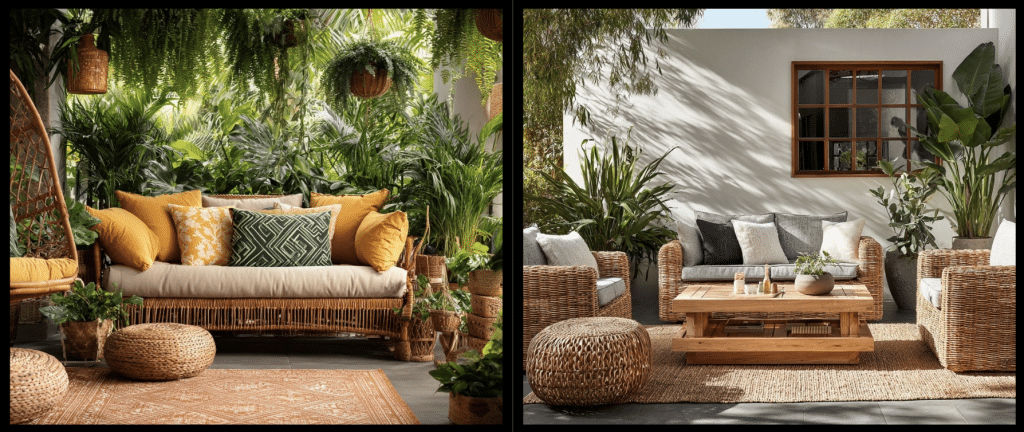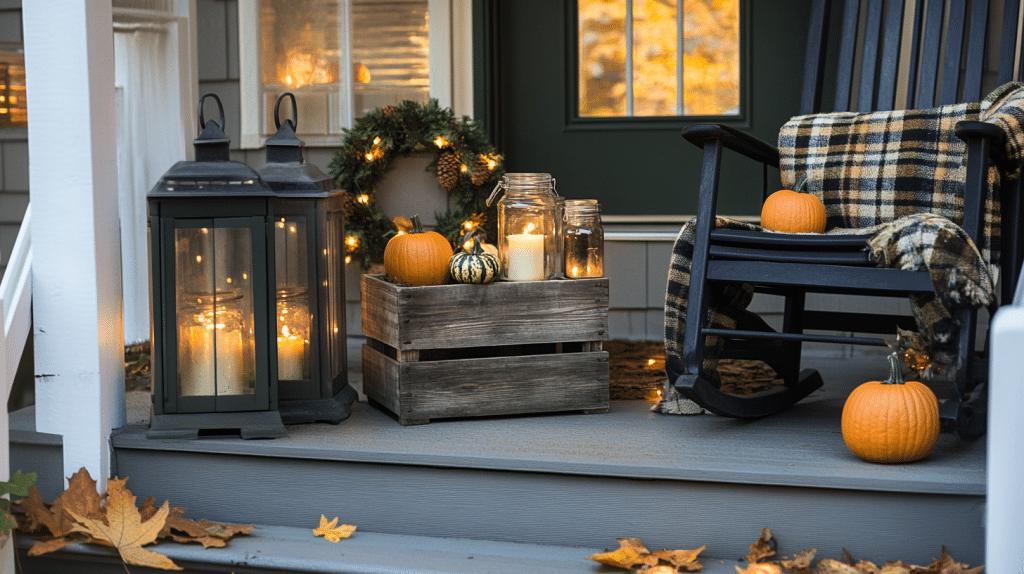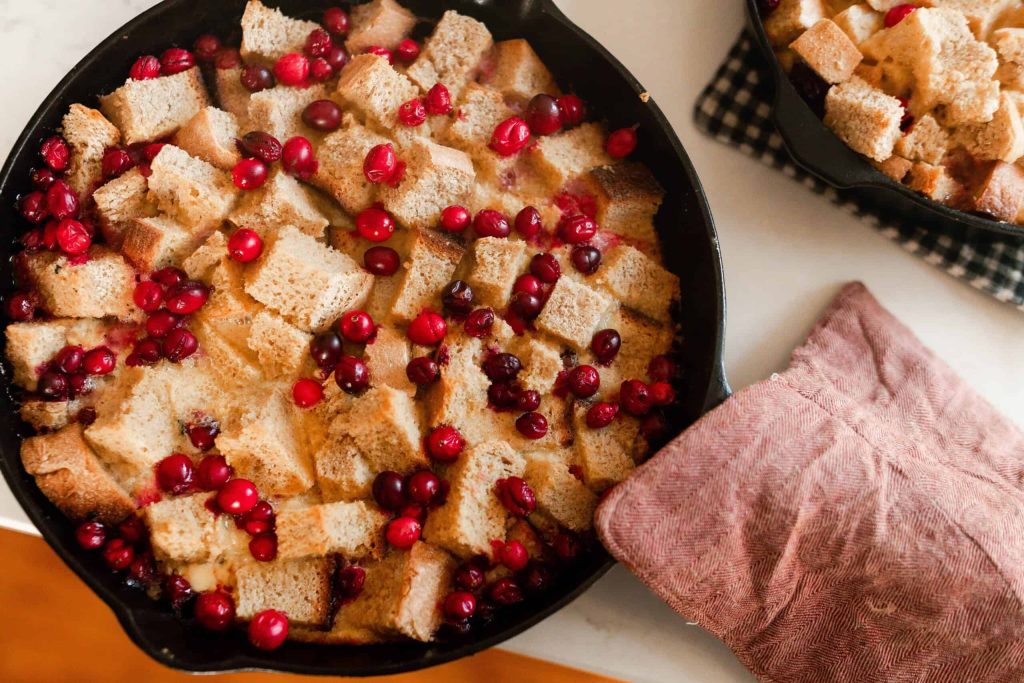You’re standing confused in the furniture store, staring at two chairs that look practically identical. One says “wicker,” the other says “rattan.” The salesperson is hovering nearby, ready to pounce with their expert opinion. We’ve all been there!
But the real problem is that most people (including some furniture salespeople) use these terms interchangeably. And they’re wrong.
I used to think wicker and rattan were just fancy names for the same thing. Turns out, there’s actually a difference, and it matters more than you’d think for your patio setup.
Allow me to clear up this confusion once and for all.
What is Wicker?
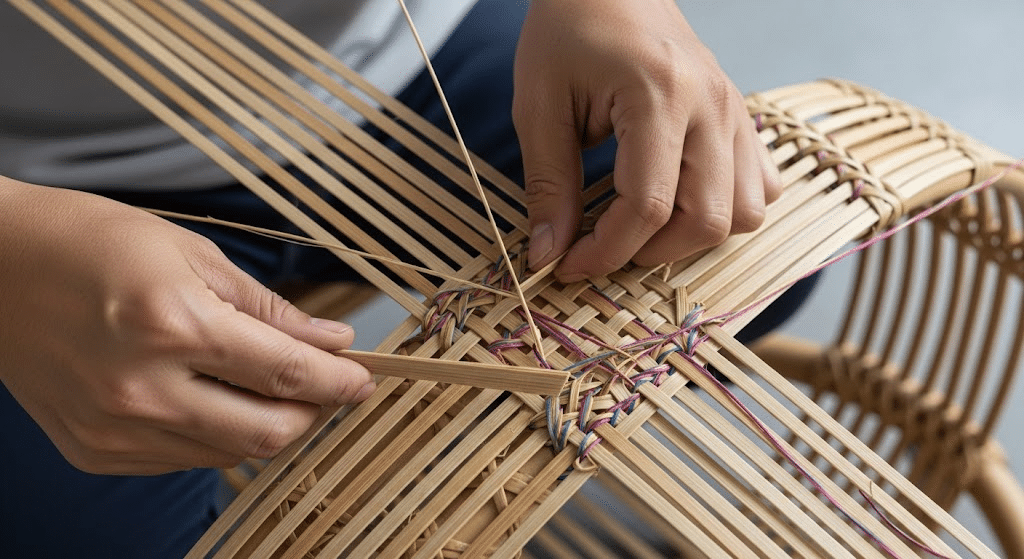
Time to bust the biggest furniture myth ever. Wicker isn’t a material; it’s a weaving technique. Mind blowing, right?
Think of wicker like knitting, but for furniture. It’s the art of weaving materials together to create those beautiful, airy patterns everyone loves. Is the material getting woven? That could be anything from bamboo to synthetic fibers.
Key Characteristics of Wicker:
- It’s all about the weave: Those intricate patterns aren’t just pretty; they’re functional too
- Lightweight champion: Easy to move around when the weather gets moody
- Breathable design: Air flows through those gaps, keeping things cool
- Flexible materials: Can be made from natural or synthetic stuff
- Classic look: That timeless appeal that never goes out of style
- Versatile uses: Perfect for outdoor furniture, indoor accent pieces, planters, and even lampshades
What Makes Wicker Special: The beauty lies in the technique. Skilled craftspeople weave strips of material over and under a frame, creating sturdy yet flexible furniture. It’s like building with grown-up Lincoln Logs, but way more stylish.
Durability Factor: Here’s where it gets interesting. Wicker’s strength depends entirely on what it’s made from. Natural wicker needs some TLC, while synthetic versions can handle whatever Mother Nature throws at them.
What is Rattan?
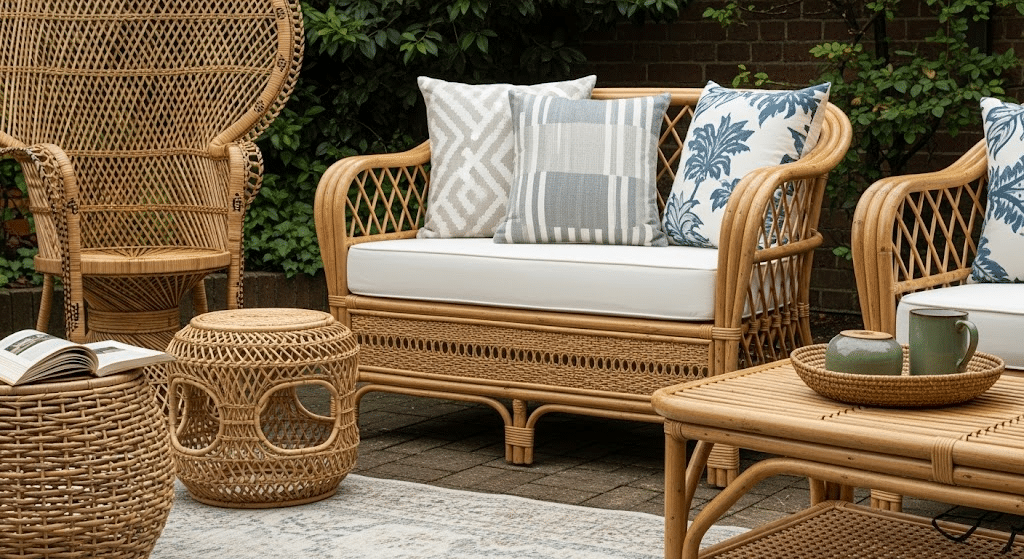
Rattan is a plant. A climbing palm, to be exact, that grows in tropical forests and laughs in the face of humidity.
This isn’t your average houseplant. Rattan vines can grow up to 200 feet long, making them the overachievers of the plant world. When harvested, they become the raw material for furniture that’s both beautiful and tough.
Key Characteristics of Rattan:
- 100% natural material: Straight from the tropical rainforest to your patio
- Incredibly strong: Those vines didn’t climb 200 feet by being wimpy
- Naturally flexible: Bends without breaking, like a yoga instructor
- Unique grain patterns: Each piece tells its own story
- Eco-friendly choice: Renewable resource that grows back quickly
- Multiple uses: Ideal for furniture frames, walking canes, handicrafts, home decor items, and traditional weaving projects
What Makes Rattan Special: The magic happens in the processing. Raw rattan gets steamed, bent, and shaped while it’s still flexible. Once it cools and dries, it locks into place like nature’s own memory foam.
The Natural Advantage: Rattan furniture possesses an organic charm that synthetic materials can’t replicate. Those natural variations in color and texture? That’s not a flaw, that’s character. Each piece is slightly different, like a piece of furniture’s fingerprint.
What is the Difference Between Cane, Jute, Rattan, Bamboo, and Wicker?
When it comes to natural materials used in furniture and home decor, cane, jute, rattan, bamboo, and wicker are often mentioned. While these materials share some similarities, they have distinct characteristics that set them apart.
| Material | Description | Origin | Characteristics | Common Uses |
|---|---|---|---|---|
| Cane | Slender, flexible stems from the outer bark of the rattan palm | Southeast Asia | Strong, lightweight, and pliable | Furniture, baskets, and handicrafts |
| Jute | Long, soft, and shiny vegetable fiber spun into coarse, strong threads | Indian subcontinent | Strong, durable, and biodegradable | Hessian cloth, burlap, and twine |
| Rattan | Climbing palm with solid, flexible stems | Southeast Asia | Strong, durable, and easy to work with | Furniture, baskets, and home decor |
| Bamboo | Fast-growing grass with hollow, jointed stems | Various regions worldwide | Strong, lightweight, and sustainable | Furniture, flooring, and construction |
| Wicker | Weaving technique using various pliable plant materials | Various regions worldwide | Lightweight, sturdy, and visually appealing | Furniture, baskets, and home accessories |
How to Decide Between Wicker vs Rattan
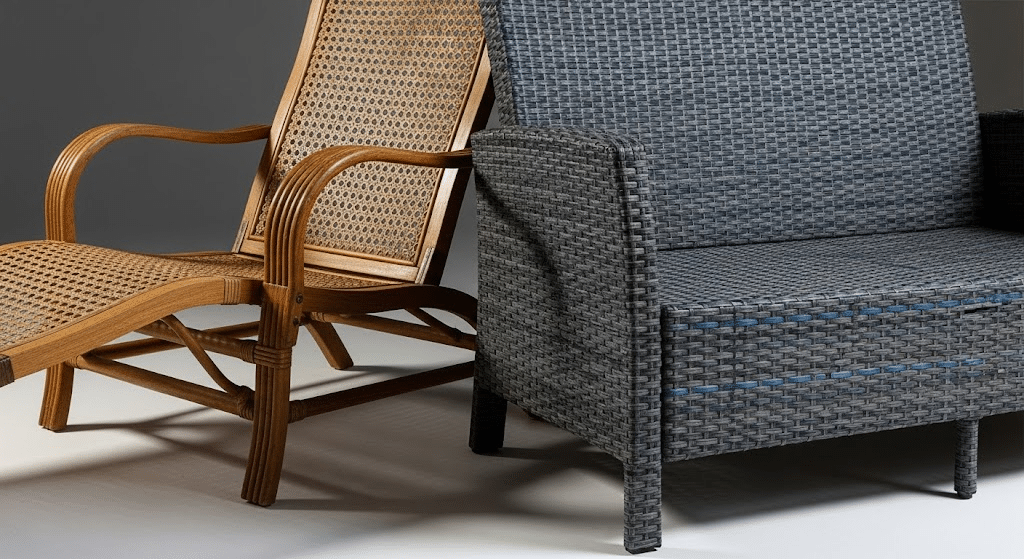
Here’s where things get interesting. Choosing between rattan vs wicker isn’t just about looks; it’s about lifestyle, budget, and how much maintenance makes you want to hide under a blanket.
What is the Difference Between Wicker and Rattan?
Time for the ultimate face-off between these two furniture favorites: wicker vs rattan. While they may look similar from across the patio, these differences will have a significant impact on your daily life.
Understanding what is the difference between wicker and rattan will save you from regretting your furniture choice later and help you make the most informed decision for your space and lifestyle.
| Characteristic | Wicker | Rattan |
|---|---|---|
| Material Origin | Weaving technique using various materials (synthetic, bamboo, reed) | Specific climbing palm plant |
| Weather Resistance | Synthetic: Excellent / Natural: Poor | Requires protection from elements |
| Maintenance | Synthetic: Low / Natural: High | High – needs regular oiling and care |
| Price Range | Generally more affordable | Higher upfront investment |
| Flexibility | More rigid once constructed | Natural give and flexibility |
| Durability | Depends on the material used | Very strong when properly maintained |
| Color Options | Wide variety available | Limited to natural tones |
| Weight | Usually lightweight | Heavier than synthetic alternatives |
Pros and Cons + Maintenance Tips
Let’s get brutally honest about wicker vs rattan, and what you’re really signing up for with each option. Every piece of furniture comes with its own personality quirks, and these two are no exception.
The key is knowing which benefits will make you happy and which drawbacks will make you want to throw cushions at the wall.
Wicker
Wicker gets a lot of love for good reason. It’s versatile, reliable, and ready for whatever you throw at it.
Pros:
- Lightweight and easy to rearrange
- Synthetic versions are weather-resistant
- Huge variety of styles and colors
- Generally more affordable
- Low maintenance if you choose synthetic
Cons:
- Natural versions need regular care
- It can look cheap if you go too budget-friendly
- Synthetic versions might not have that authentic feel
- Weaving can trap dirt and debris
Maintenance Tips:
- Dust wicker regularly with a soft cloth or vacuum with a brush attachment to remove dirt and debris
- Clean using a mild soap solution and a damp cloth, then rinse and dry thoroughly
- Avoid harsh chemicals or abrasive cleaners that can damage the fibers
- Apply a coat of clear furniture wax or spray lacquer annually to protect and shine
- Keep wicker away from direct sunlight and heat sources to prevent drying and cracking
- Maintain proper humidity levels to avoid excessive dryness or moisture damage
- Address any breaks or loose weaving promptly to prevent further unraveling
- Store wicker indoors or cover during inclement weather and winter months
Rattan
Rattan is for those who appreciate authentic materials and don’t mind putting in some effort to achieve a natural look.
Pros:
- Authentic natural beauty that ages gracefully
- Incredibly strong and durable when cared for
- Comfortable without additional cushioning
- Eco-friendly and sustainable choice
- Unique character in every piece
Cons:
- Requires regular maintenance and protection
- More expensive upfront investment
- Can crack or split in extreme weather
- Limited color options (mostly natural tones)
- Heavier than most wicker alternatives
Maintenance Tips:
- Clean rattan regularly with a soft, dry cloth or vacuum with a brush attachment
- For deeper cleaning, use a mild detergent solution and a damp cloth, then wipe dry
- Avoid soaking rattan or using excessive water, as it can weaken the fibers
- Keep rattan away from direct sunlight and heat to prevent fading and drying out
- Rotate rattan furniture periodically to ensure even wear and coloring
- Use coasters and placemats to protect against watermarks and stains
Which Lasts Longer?
When it comes to durability, both wicker and rattan are strong materials that can last for years with proper care.
However, there are a few factors to consider:
- Rattan is generally more durable than wicker due to its solid core
- Wicker, being woven, may be more susceptible to unraveling or damage
- The lifespan of both materials depends on the quality of construction and maintenance
Ultimately, high-quality rattan furniture may have a slight edge in longevity over wicker.
Which One to Go For: Rattan Furniture or Wicker Furniture?
The truth is that it depends on your lifestyle and what drives you crazy.
If you’re the type who forgets to water plants and considers dusting a seasonal activity, synthetic wicker is your friend. It’ll survive your neglect and still look decent.
However, if you enjoy caring for beautiful things and watching them develop character over time, rattan may be the perfect match for you. Just remember, it needs regular attention and protection from harsh weather.
Consider your climate and budget as well. Harsh conditions favor synthetic wicker, while rattan works best in protected spaces. Quality rattan costs more upfront, but it can last for decades with proper care.
Both create beautiful outdoor spaces. Choose based on whether you want to be a furniture caretaker or just a furniture enjoyer.
Decorating with Wicker

1. Mix and match:
Don’t be afraid to combine different wicker pieces or styles within the same room. For example, a traditional wicker armchair can be paired with a more modern wicker side table for an eclectic look.
2. Use cushions and pillows:
Soften the look of wicker furniture by adding plush cushions and pillows in complementary colors or patterns. This will make the pieces more comfortable and inviting.
3. Play with color:
While natural wicker is a classic choice, painted wicker can add a pop of color to your space. Consider using white, black, or even bold hues like blue or green to create a fresh and modern look.
4. Incorporate plants:
Wicker and greenery are a natural pairing. Place potted plants or hanging baskets near your wicker furniture to create a tropical or bohemian vibe.
Decorating with Rattan
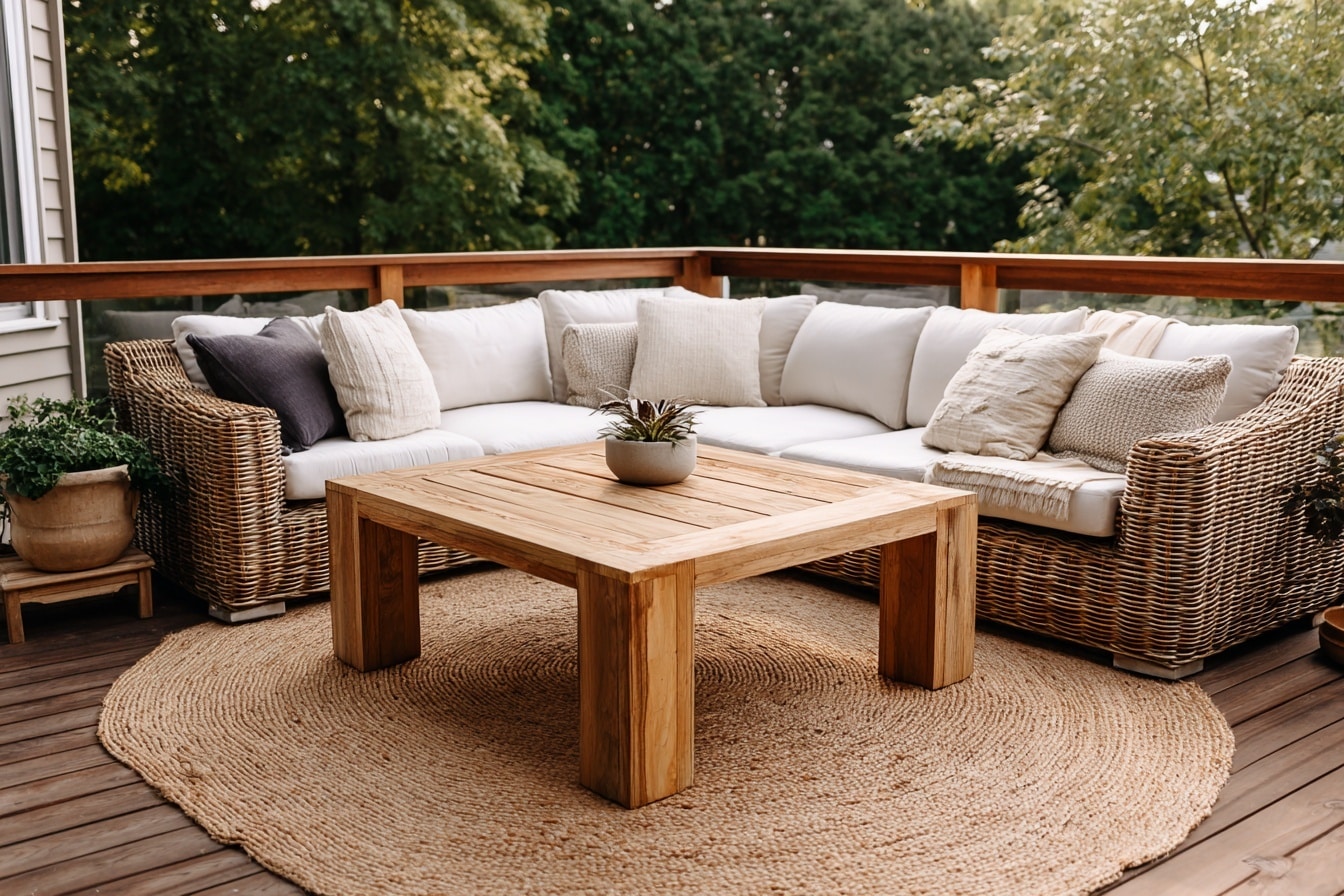
1. Mix with other natural elements:
Rattan pairs beautifully with other natural materials such as wood, stone, and linen. Combine rattan furniture with a wooden coffee table or a jute rug for a cohesive, organic look.
2. Lighten up:
Rattan’s open weave allows light to pass through, making it an excellent choice for rooms that need a bit of lightness and airiness.
3. Experiment with different styles:
Rattan furniture comes in a variety of styles, from bohemian to coastal to modern. Don’t be afraid to mix and match different styles to create a unique, personal look.
Wrapping It Up
There you have it: the wicker vs rattan showdown, decoded and simplified. No more standing confused in furniture stores, wondering if that salesperson knows what they’re talking about.
The choice comes down to your personality, your climate, and your willingness to act as a furniture babysitter. Either way, you’ll end up with a beautiful outdoor space that makes the neighbors slightly jealous.
Now go forth and make an informed decision. Your outside area is waiting!


